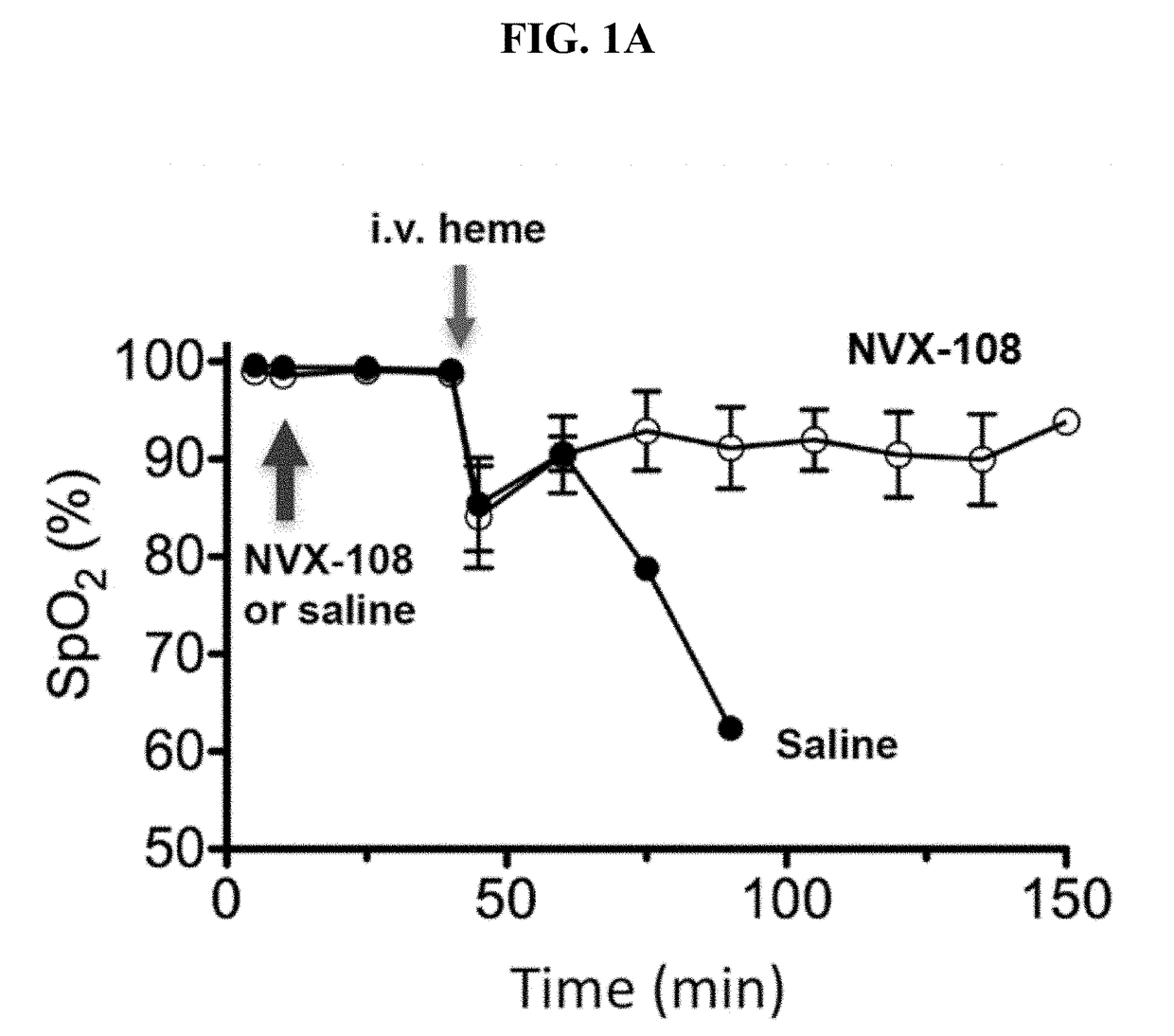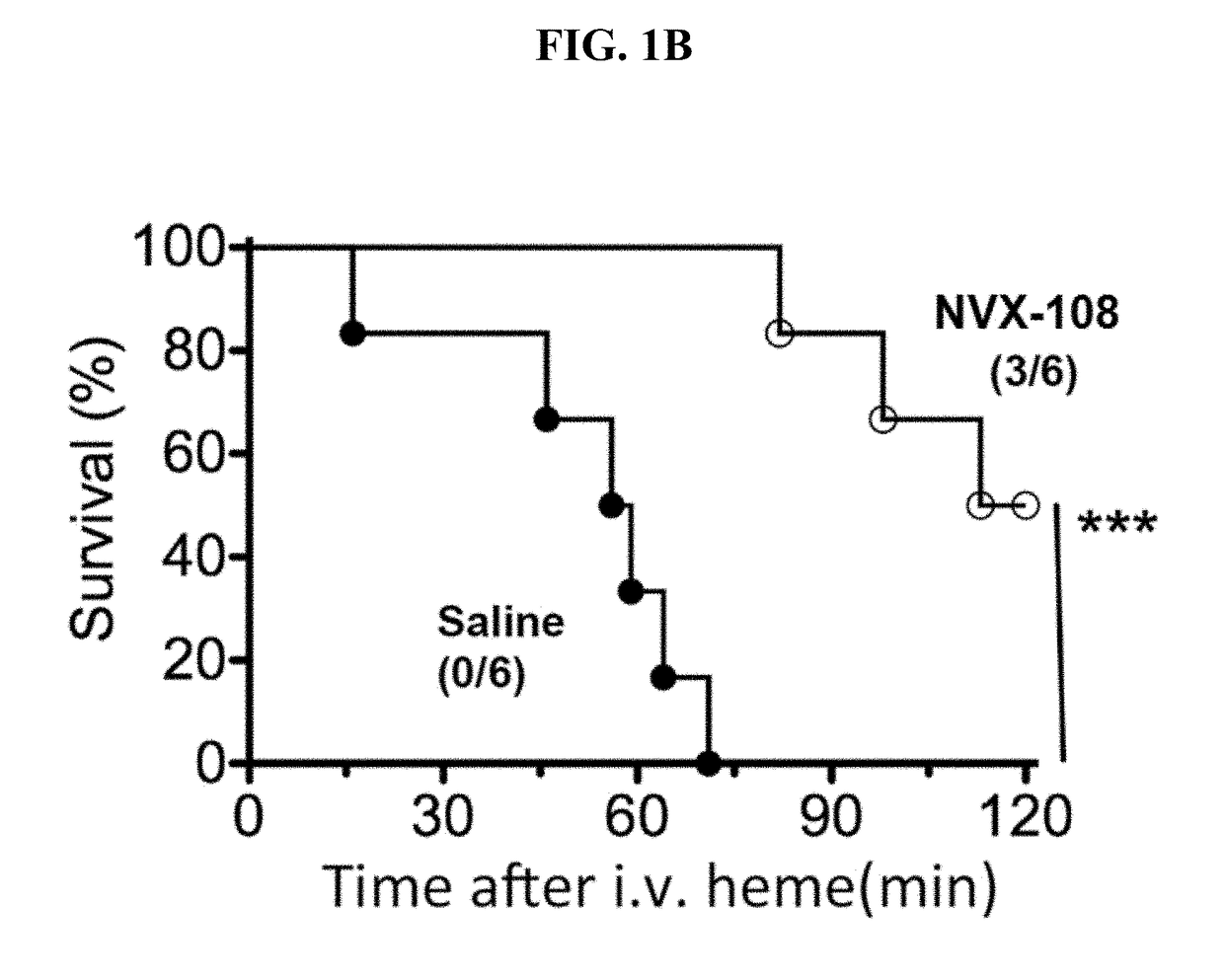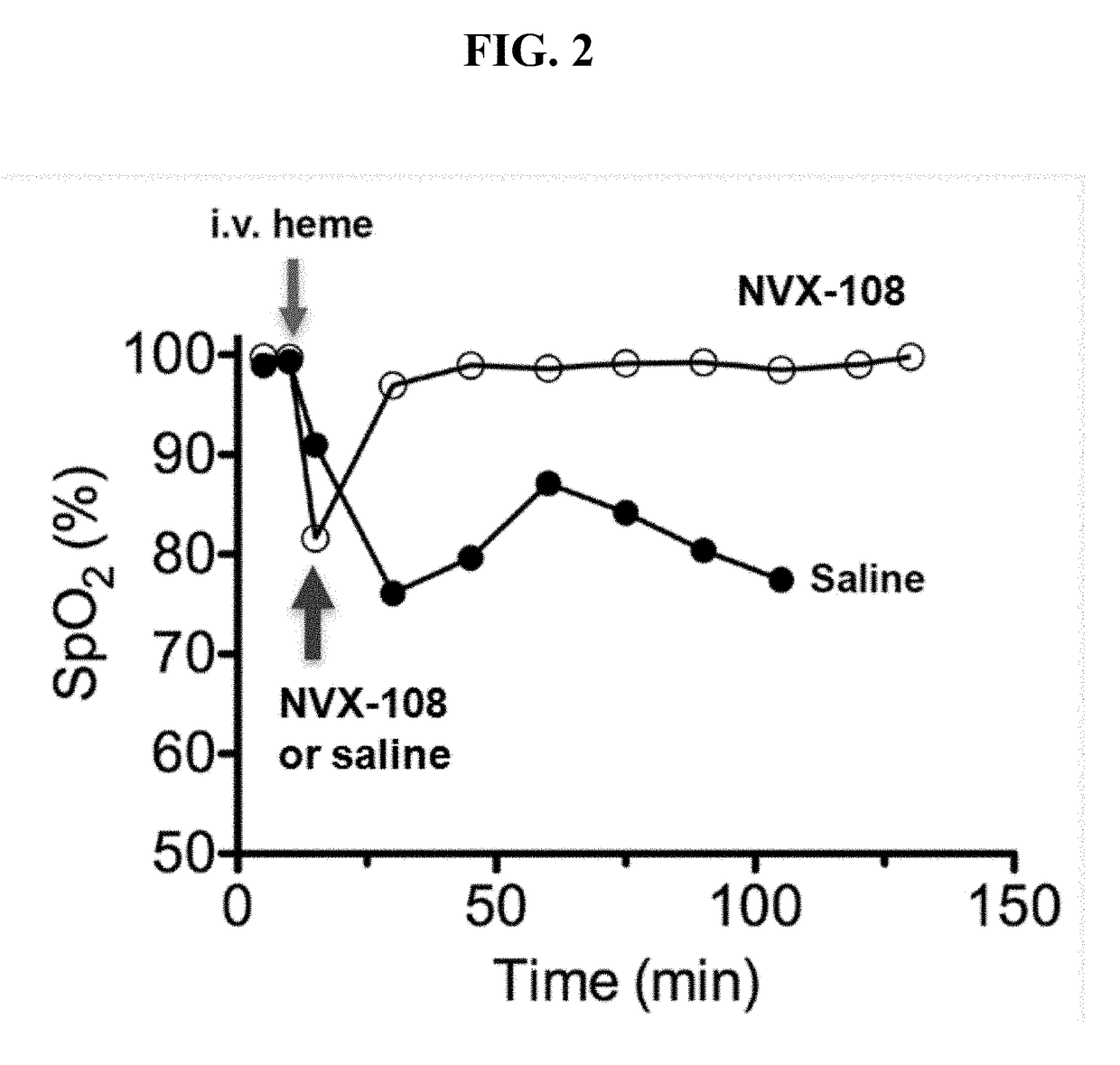Treatment of acute complications of sickle cell disease
a sickle cell disease and acute complications technology, applied in the field of pharmaceutical compositions, can solve the problems of scd patients subject to stroke, renal damage, eye damage, etc., and achieve the effects of reducing ischemic tissue damage, safe and reliable use, and exceptional therapeutic properties
- Summary
- Abstract
- Description
- Claims
- Application Information
AI Technical Summary
Benefits of technology
Problems solved by technology
Method used
Image
Examples
example 1
[0059]A 30% sucrose solution was prepared by dissolving an appropriate amount of USP grade sucrose in water for injection at room temperature followed by a mixture of disodium hydrogen phosphate and sodium dihydrogen phosphate to buffer the system at a pH of 7.0. In a second vessel a suspension of DDFP (dodecafluoropentane) in PEG-Telomer B in the ratio of DDFP:PEG-Telomer B:5:1 (w:w), was prepared as follows: PEG-Telomer B was dispersed in water for injection by stirring in a jacketed vessel cooled to 4° C. Pre-cooled (4° C.) DDFP was added to the stirred PEG-Telomer B and allowed to stir until a uniformly milky suspension was achieved. This suspension was homogenized under high pressure in an Avestin model C50 homogenizer for up to 18 minutes keeping the temperature below 7° C. The emulsion was transferred via the homogenizer under low pressure to a vessel containing 30% sucrose solution in water. The resulting solution was stirred for up to 20 minutes, and then transferred throug...
example 2
[0060]A 5% sucrose solution was prepared by dissolving an appropriate amount of USP grade sucrose in water for injection at room temperature followed by a mixture of disodium hydrogen phosphate and sodium dihydrogen phosphate to buffer the system at a pH of 7.0. In a second vessel a suspension of DDFP (dodecafluoropentane) in PEG-Telomer B in the ratio of DDFP:PEG-Telomer B:5:1 (w:w), was prepared as follows: PEG-Telomer B was dispersed in water for injection by stirring in a jacketed vessel cooled to 4° C. Pre-cooled (4° C.) DDFP was added to the stirred PEG-Telomer B and allowed to stir until a uniformly milky suspension was achieved. This suspension was homogenized under high pressure in an Avestin model C50 homogenizer for up to 18 minutes keeping the temperature below 7° C. The emulsion was transferred via the homogenizer under low pressure to a vessel containing 30% sucrose solution in water. The resulting solution was stirred for up to 20 minutes, and then transferred through...
example 3
[0061]A suspension of a mixture of phospholipids with the following composition, Dipalmitoylphosphatidylcholine (DPPC) and Phosphatidylethanolamine-PEG 5k in a mole ratio of 92 mole percent DPPC and 8 mole percent DPPE-PEG was prepared by warming them in a mixture of propylene glycol (15 v %), Glycerol (5 v %) and 5 mM sodium phosphate in water buffered 0.9% normal saline (85 v %), to above the phase transition temperature of the all the lipids.
[0062]After the lipids were dispersed the suspension was stirred in a jacketed vessel and cooled to 4° C. Pre-cooled (4° C.) DDFP was added to the stirred phospholipid suspension at weight ratio of 5 to 1, and allowed to stir until a uniformly milky suspension was achieved. This suspension was homogenized under high pressure in an Avestin model C50 homogenizer for up to 18 minutes keeping the temperature below 7° C. The emulsion was transferred via the homogenizer under low pressure to a vessel containing 30% sucrose solution in water.
[0063]T...
PUM
| Property | Measurement | Unit |
|---|---|---|
| boiling point | aaaaa | aaaaa |
| boiling point | aaaaa | aaaaa |
| weight percent | aaaaa | aaaaa |
Abstract
Description
Claims
Application Information
 Login to view more
Login to view more - R&D Engineer
- R&D Manager
- IP Professional
- Industry Leading Data Capabilities
- Powerful AI technology
- Patent DNA Extraction
Browse by: Latest US Patents, China's latest patents, Technical Efficacy Thesaurus, Application Domain, Technology Topic.
© 2024 PatSnap. All rights reserved.Legal|Privacy policy|Modern Slavery Act Transparency Statement|Sitemap



